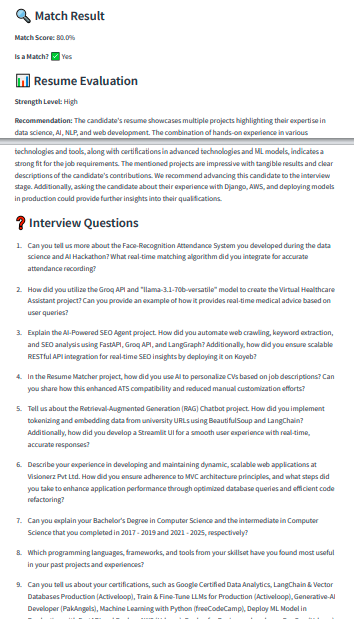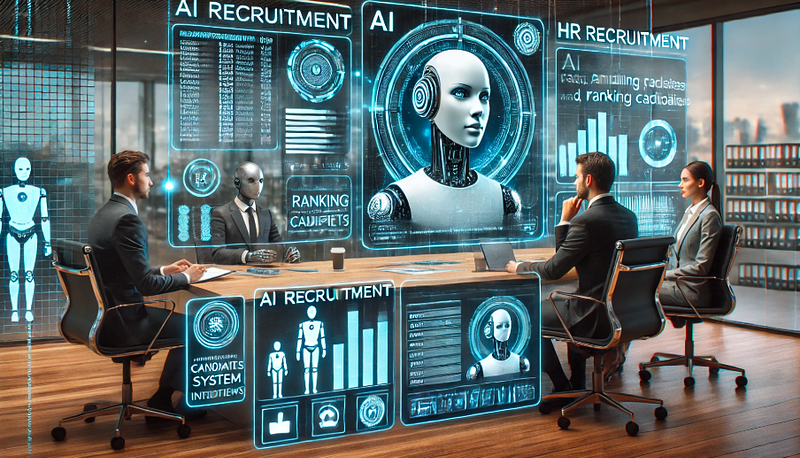In today’s fast-paced world, HR teams are often overwhelmed with the sheer volume of resumes they receive for job openings. Manually screening candidates is time-consuming, error-prone, and inefficient. What if we could automate this process using AI? In this blog, I’ll walk you through how I built an AI-Powered HR Recruitment System that streamlines candidate screening, evaluates resumes, and even generates interview questionsΓÇè—ΓÇèall with the help of FastAPI, Next.js, and Groq API.
The Problem
Recruitment is a critical yet tedious process. HR teams spend hours:
- Screening resumes to match them with job descriptions.
- Evaluating candidates based on their skills and experience.
- Preparing interview questions tailored to each candidate.
This manual process is not only slow but also prone to human bias and errors. Automating these tasks can save time, improve accuracy, and ensure a fairer evaluation process.
The Solution
I built an AI-Powered HR Recruitment System that:
- Analyzes Resumes: Matches resumes with job descriptions and provides a match score.
- Evaluates Resumes: Assesses the strength of the resume and recommends whether to shortlist the candidate.
- Generates Interview Questions: Creates tailored questions based on the candidate’s resume.
Tech Stack
Here’s what I used to build the system:
- FastAPI: For the backend to handle API requests and business logic.
- Next.js: For the frontend to provide a user-friendly interface.
- Groq API: For advanced AI analysis using large language models (LLMs).
- LangChain: For PDF parsing and text extraction.
- OCR (pytesseract and pdf2image): For extracting text from scanned PDFs
How It Works
1. Resume Analysis
The system extracts text from the uploaded resume (PDF or TXT) and uses the Groq API to compare it with the job description. It calculates a match score and determines if the resume is a good fit.
2. Resume Evaluation
If the resume matches the job description, the system evaluates its strength (low, medium, high) and provides a recommendation for the HR team.
3. Interview Questions
Based on the resume’s strengths, the system generates tailored interview questions.
Output:

Why This System is Helpful
1. Saves Time
-
Automates the tedious task of resume screening.
- Reduces the time spent on manual evaluation and question preparation.
2. Improves Accuracy
- Uses AI to objectively match resumes with job descriptions.
- Eliminates human bias in the initial screening process.
3. Enhances Candidate Experience
- Provides tailored interview questions, ensuring a more personalized experience.
- Speeds up the recruitment process, keeping candidates engaged
4. Scalable
- Can handle a large volume of resumes without compromising on quality.
- Easily integrates with existing HR systems.
Future Enhancements
- Multi-Language Support: Add support for resumes in different languages.
- Integration with ATS: Integrate with Applicant Tracking Systems (ATS) like Greenhouse or Workday.
- Candidate Feedback: Provide feedback to candidates on their resume strength.
Conclusion
This AI-Powered HR Recruitment System is a game-changer for HR teams. It automates repetitive tasks, improves accuracy, and enhances the candidate experience. By leveraging cutting-edge technologies like FastAPI, Streamlit, and Groq API, we can make recruitment faster, fairer, and more efficient.
